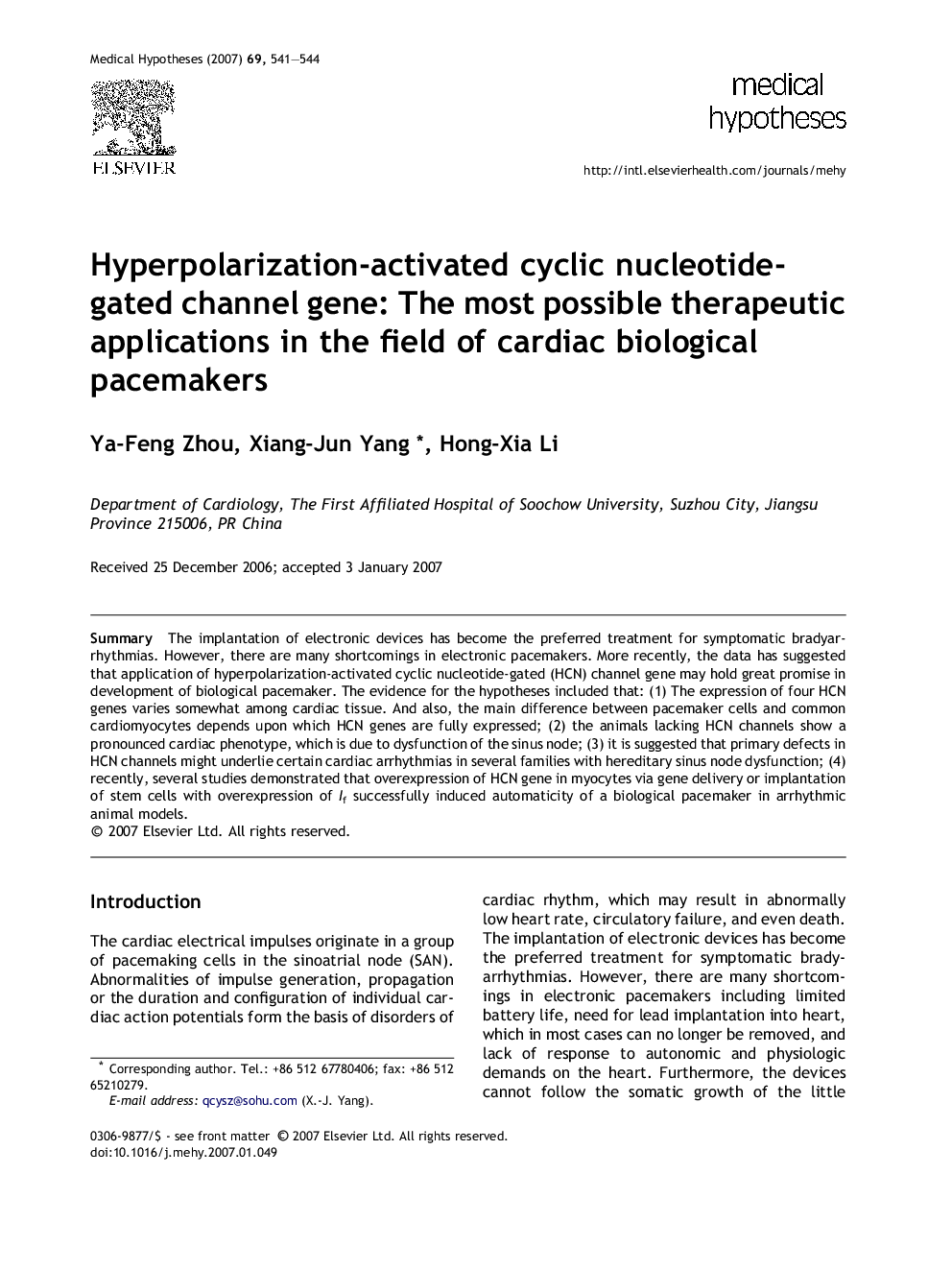| Article ID | Journal | Published Year | Pages | File Type |
|---|---|---|---|---|
| 2492388 | Medical Hypotheses | 2007 | 4 Pages |
SummaryThe implantation of electronic devices has become the preferred treatment for symptomatic bradyarrhythmias. However, there are many shortcomings in electronic pacemakers. More recently, the data has suggested that application of hyperpolarization-activated cyclic nucleotide-gated (HCN) channel gene may hold great promise in development of biological pacemaker. The evidence for the hypotheses included that: (1) The expression of four HCN genes varies somewhat among cardiac tissue. And also, the main difference between pacemaker cells and common cardiomyocytes depends upon which HCN genes are fully expressed; (2) the animals lacking HCN channels show a pronounced cardiac phenotype, which is due to dysfunction of the sinus node; (3) it is suggested that primary defects in HCN channels might underlie certain cardiac arrhythmias in several families with hereditary sinus node dysfunction; (4) recently, several studies demonstrated that overexpression of HCN gene in myocytes via gene delivery or implantation of stem cells with overexpression of If successfully induced automaticity of a biological pacemaker in arrhythmic animal models.
